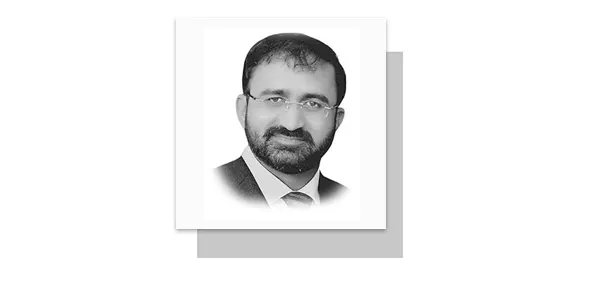Religious violence is undergoing a revival not only in Pakistan but in the whole world. The past decade has witnessed a sharp increase in violent sectarian or religious tension across the country. These range from Islamic extremists waging global campaigns and power struggles between radical groups in the Middle East to the persecution of Rohingya in Myanmar and outbreak of violence between several communities of faiths across the globe. According to Pew, since 9/11 more than half of the world’s countries have experienced a high incidence of hostilities motivated by religious hatred, mob violence related to religion, terrorism and harassment of women for violating religious codes. The spike in religious violence is global and affects virtually every religious group. A 2020 Minority Rights Group report indicates massive incidents of religiously motivated reports increasing in the country. Burning the Churches in Jaranwala, Faisalabad, Lyal Pur, the old identification on the name of Sir Lyal Pur, is the most recent example of religious motivated violence in the name of Religion. Pakistan has been suffering from violent extremism, aggression, fanaticism and extremism for the last four decades. Lack of implementation of policies, law and will of the state are major reasons for re-emergence of religious violence and radicalization. Seminars, symposiums, NGO’s role and religious conferences could not create massive impact to eradicate extreme trends and behavior in the society. Our higher education institutions and policy-making institutions like Islamic ideological Council and Islamic Research Institute partially failed to make effective influence to cope with the challenge of emerging violence in the country. One of the major reasons for this failure is outdated research proposals in the field of Islamic Studies at MS to Post-DOC level research which has no impact to encounter extremism and terrorism. Scholars are just fulfilling the requirement of their degree and supervisors are focusing on the numbers of their supervisions for the upgradation of their academic profiles. On the other side religious communities like scholars, Ulema and spiritual leaders (Mashaikh, Peers) are only doing their specific job in mosques and preaching their own school of thought in Juma sermons. Mosques are no more community centers and religious tolerance teaching institutions, they are portraying their specific agenda of their sect to cement their position in their sect. Another main reason is a self-centered approach and to hold materialistic benefits for their future security. Now coming to the point, how is it that religions – which supposedly espouse peace, love and harmony – are so commonly connected with intolerance and violent aggression? Social scientists are divided on the issue. Scholars contend that even when extremists use theological texts to justify their actions, “religious” violence is not religious at all – but rather a perversion of core teachings. Some believe that because religions fuel certainties and sanctify martyrdom, they are often a root cause of conflict. Meanwhile, some others claim that both hierarchical religious traditions and non-hierarchical traditions can both be vulnerable to interpretation of canon to justify or even provide warrants for violent action. Religious leaders are often criticized for not doing enough to stem religious violence. By not publicly condemning every act of extremism, entire faith communities are presumed to be somehow complicit. This is unfair. Indeed, there are millions of people of faith who are actively involved in helping the poor and marginalized and fostering reconciliation in the aftermath of war. They may be mobilized through their churches, mosques, synagogues and temples, or work through international humanitarian agencies and missions overseas. While regularly accused of fanning the flames of sectarian violence, religious leaders are frequently trying to do the opposite, including mediating peace agreements and promoting non-violence.
In an era of turbulence and uncertainty, interfaith action may offer an important antidote to religious violence. Religious communities can and do offer a reminder of the core principles of our common humanity. While not the exclusive preserve of faith-based groups, the conscious spread of values of empathy, compassion, forgiveness and altruism are needed today more than ever. The persistent calls for patience, tolerance, understanding, face-to-face dialogue and reconciliation are more important than ever given today’s spiraling polarization and the dangerous anonymity provided by social media. Interfaith institutions can be effective, but success often comes down to the extent to which religious leaders can work with the ‘internal polices’ within their communities to cool down hotheads and prevent escalation. In the end, religious groups must hold themselves to the highest standard. This requires, at a minimum, doing no harm. It also means being accountable about what strategies work and which do not.Finally, religious groups and the interfaith community could usefully get more proactive about peace-making. This will require leaving the safe zone of like-minded religious organizations and engaging more fulsomely with international agencies and the business community. Religious leaders should also become more literate with new technologies, not least social media, finding ways to promote positive values both on- and offline. And successful instances of interfaith cooperation – including through powerful networks like Religion for Peace – need to be better marketed. This is because signals and symbols of collective action across religious divides are needed more than ever in our disorderly and fractured world. Pakistan is on the verge of a decisive moment in challenging global dynamics which demands diversity, inclusiveness and pluralism to promote the real essence of inter-religious dialogue, reconciliation and conflict resolution. The country has a beautiful bunch of different faiths, communities and ethnic groups which shows diversity of colors, beliefs and thoughts and it is the real fragrance of Pakistan when it is mutually engaged. Who will initiate to bring back peace and harmony in Pakistan? Everyone is waiting for the appropriate answer.— The Writer is PhD in Islamic Studies from NUML Islamabad and Author of Five Books & Thirty Five Research Publications.
Email: [email protected]










